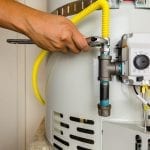Maintaining Your Home's Hot Water System: Important GuidelinesProfessional Guidance for Maintaining Your Home's Hot Water SystemProfessional Guidance on Maintaining Your Home's Hot Water System
Maintaining Your Home's Hot Water System: Important GuidelinesProfessional Guidance for Maintaining Your Home's Hot Water SystemProfessional Guidance on Maintaining Your Home's Hot Water System
Blog Article
This post down below relating to Tips on Maintaining a Water Heater is without a doubt enjoyable. Don't overlook it.

Hot water is vital for day-to-day convenience, whether it's for a revitalizing shower or cleaning meals. To guarantee your warm water system runs successfully and lasts longer, regular maintenance is crucial. This write-up offers functional ideas and understandings on just how to maintain your home's hot water system to avoid interruptions and costly repair work.
Intro
Maintaining your home's hot water system may appear difficult, yet with a couple of simple steps, you can ensure it operates efficiently for many years ahead. This guide covers whatever from recognizing your warm water system to do it yourself upkeep suggestions and understanding when to employ specialist aid.
Relevance of Keeping Your Warm Water System
Normal maintenance not only extends the life-span of your warm water system yet additionally guarantees it runs successfully. Neglecting maintenance can bring about lowered performance, greater power costs, and even premature failure of the system.
Indications Your Hot Water System Needs Upkeep
Recognizing when your warm water system requires interest can avoid major issues. Keep an eye out for indicators such as inconsistent water temperature, unusual noises from the heating system, or rustic water.
Flushing the Water Heater
Purging your water heater removes sediment build-up, enhancing effectiveness and prolonging its life.
Monitoring and Replacing Anode Rods
Anode rods protect against deterioration inside the storage tank. Examining and replacing them when worn is important.
Complex Concerns Needing Expert Help
Instances include significant leaks, electric issues, or if your water heater is consistently underperforming.
Regular Professional Upkeep Advantages
Specialist maintenance can consist of comprehensive evaluations, tune-ups, and ensuring conformity with security criteria.
Checking and Adjusting Temperature Setups
Changing the temperature setups makes sure optimal efficiency and safety.
Do It Yourself Tips for Maintenance
You can do several upkeep jobs yourself to maintain your hot water system in leading condition.
Checking for Leakages
Frequently evaluate pipes and connections for leakages, as these can cause water damages and higher expenses.
Recognizing Your Hot Water System
Before diving right into upkeep jobs, it's helpful to comprehend the standard components of your hot water system. Typically, this consists of the hot water heater itself, pipelines, anode poles, and temperature controls.
Monthly Maintenance Tasks
Regular month-to-month checks can aid catch small concerns before they escalate.
Checking Stress Alleviation Valves
Testing the stress relief valve ensures it operates properly and stops too much stress buildup.
Insulating Pipes
Protecting warm water pipelines reduces heat loss and can save energy.
When to Call a Specialist
While DIY maintenance is useful, some problems call for specialist proficiency.
Conclusion
Normal upkeep of your home's warm water system is crucial for efficiency, longevity, and cost savings. By following these suggestions and understanding when to seek expert assistance, you can make certain a reliable supply of hot water without unexpected disturbances.
Water Heater Maintenance Tips
Test the TPR Valve
Shut off the power and the cold-water supply valve. Place a bucket under the pipe connected to the temperature-pressure-release (TPR) valve on the top or side of the tank. (This valve opens if the tank pressure gets too high.) Lift the valve’s tab to let some water out, then let go. If water keeps flowing, drain the tank partway, unscrew the old valve with a pipe wrench, and install a new one. Check the Anode Rod
Put a hose to the tank’s drain cock and let out a few gallons of water. Now fit a 1 1/16-inch socket onto the rod’s hex head on top of the heater (or under its top plate) and unscrew the rod. If it’s less than ½ inch thick or coated with calcium, buy a new one, wrap its threads with Teflon tape, put it back in the tank, and tighten securely. Use this segmented rod if headroom above the tank is limited. Drain the Tank and Wash Out Sediment
Drain the remaining water in the tank into the bucket, then stir up the sediment on the tank’s bottom by briefly opening the cold-water supply valve. Drain and repeat until clean water comes out of the hose. Close the drain cock, refill the tank, and turn its power back on. Adjust the Temperature
Find the temperature dial on the side of the tank and unscrew its cover. Adjust the dial to 120 degrees using a flathead screwdriver. For every 10 degrees the temperature is lowered, you can expect to save up to 5 percent in energy costs. Turn the water heater off or the thermostat down to its lowest setting if you plan to be away from home for more than three days. Insulate the Pipes
Buy some self-sticking 3/8-inch-thick foam pipe insulation that matches the pipes’ diameter. Slide the foam over the hot-and cold-water pipes as far as you can reach. Insulating the cold-water pipe prevents condensation in summer. Peel the tape and squeeze the insulation closed. If the pipe is 6 inches or less from the flue, cover it with 1-inch-thick unfaced fiberglass pipe wrap. https://www.thisoldhouse.com/plumbing/21016402/how-to-maintain-a-water-heater

I was introduced to that report about Tips on Maintaining a Water Heater from a friend on another site. In case you appreciated our article kindly make sure you remember to pass it around. I am grateful for being here. Don't forget to pay a visit to our blog back soon.
Click On This Link Report this page